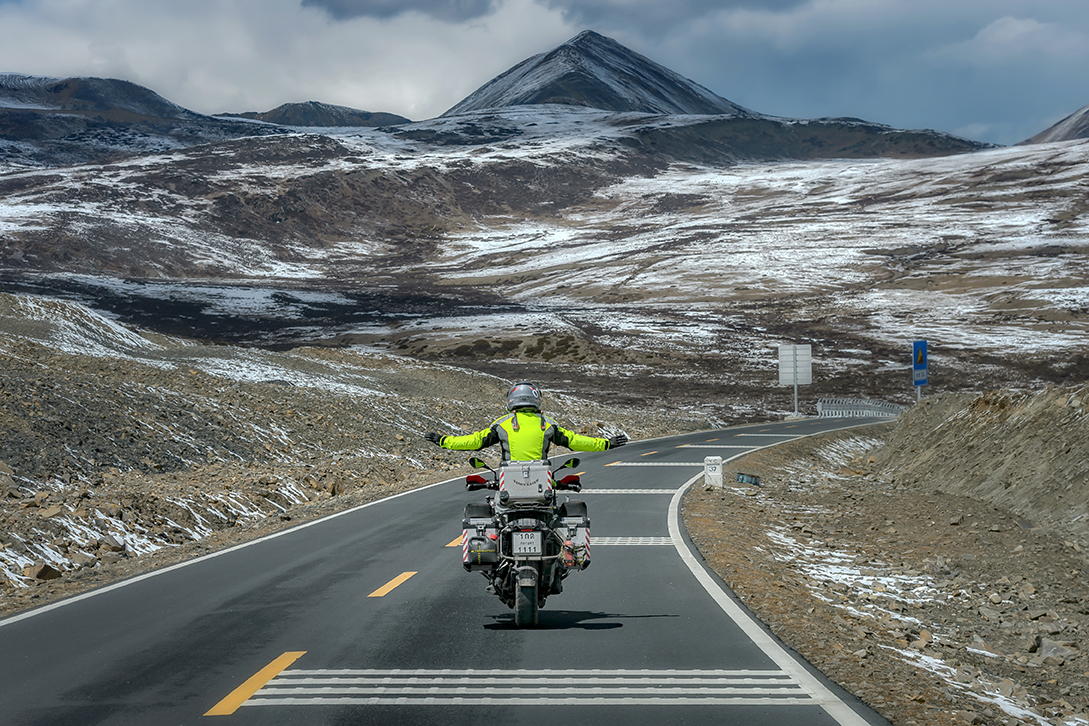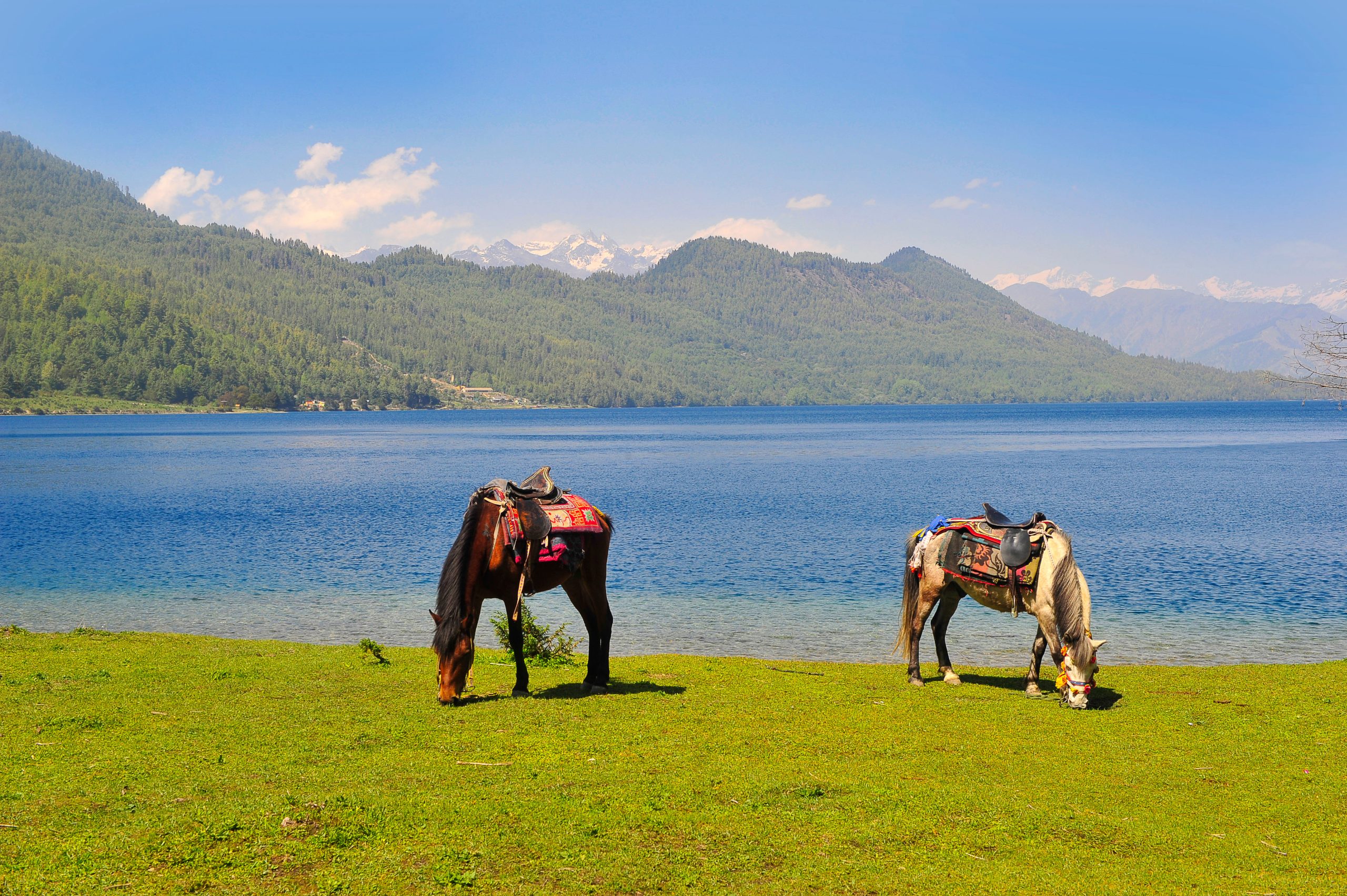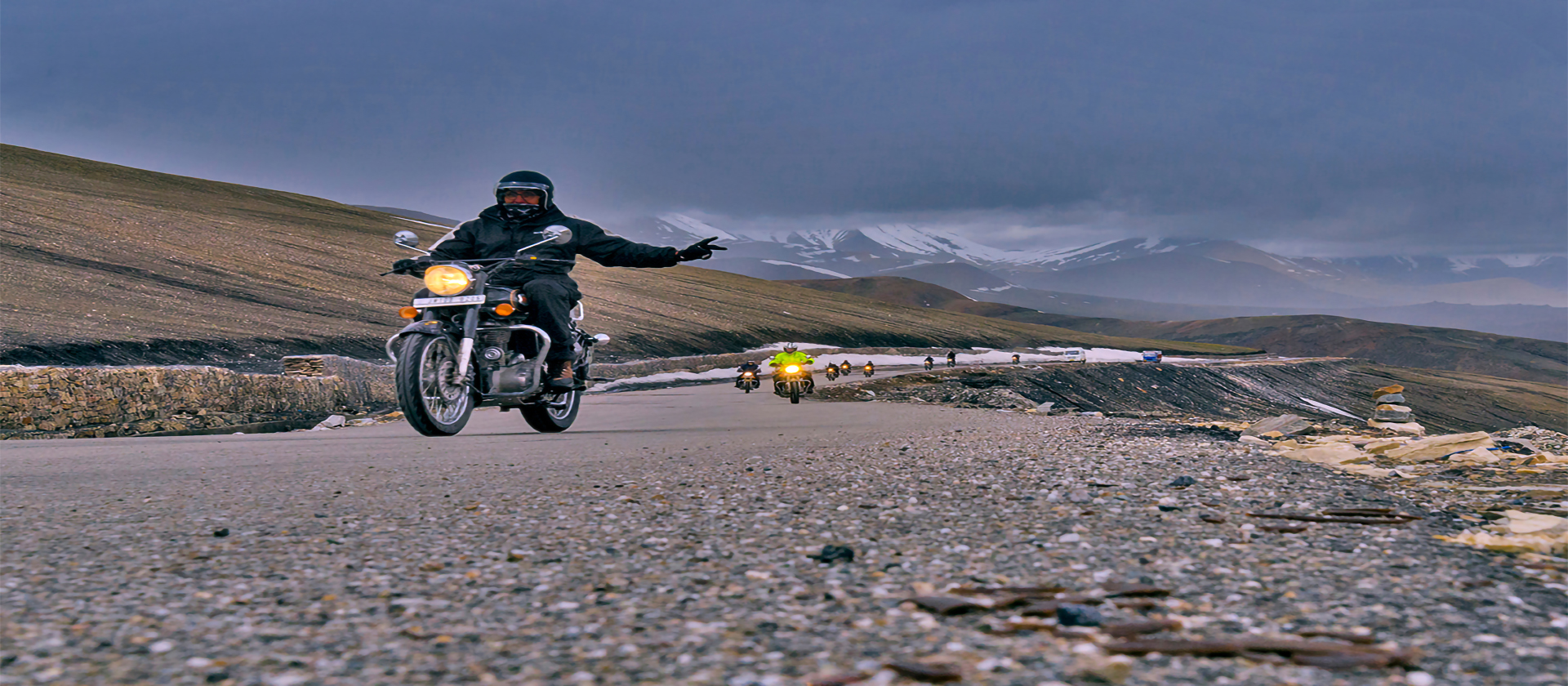
RIDE TO UPPER MUSTANG “LO MANTHANG”
- Home /
- Nepal /
- Motor Biking Tour /
- RIDE TO UPPER MUSTANG “LO MANTHANG”
Once upon a time, North of the Annapurna and Dhaulagiri ranges of the upper Himalayas in Nepal, abutting the Tibetan plateau, lay a kingdom. So remote was its location — requiring an arduous trek over some of the highest mountain passes in the world — that it acquired the moniker of the ‘Forbidden Kingdom of Lo.’
Mustang is one of the last outposts of Tibetan culture. It’s so isolated and protected that no Westerner has set foot inside its borders for centuries. But in the early 1990s, this untouched society set high in the Himalayas opened its borders for the first time, exposing an ancient worlds dazzling sacred relics long damaged by the elements and neglect.
Mustang was once an independent kingdom, although closely tied by language and culture to Tibet. From the 15th century to the 17th century, its strategic location granted Mustang control over the trade between the Himalayas and India. At the end of the 18th century the kingdom was annexed by Nepal.
This ride is one of the ultimate rides in the rain shadow part of the wind-swept desert landscape of the Himalayas with views of implausible gorges, high passes and enormous vistas passing through authentic Tibetan villages, barren ridges, eroded cliffs and Moraine valleys. Its landscape is unrivaled for it has a stupendous wilderness, pristine scenery, snowcapped peaks, spectacular monasteries and caves.
This is a restricted area. Foreign visitors have been allowed to the region since 1992, but tourism to Upper Mustang is regulated. Foreigners need to obtain a special permit to enter. Mustang is rich in Buddhist culture similar to Tibetan People. Therefore, it is an alternate way to experience the Tibetan culture and Landscape.
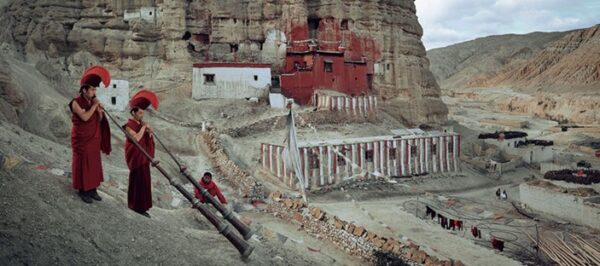
Route Map
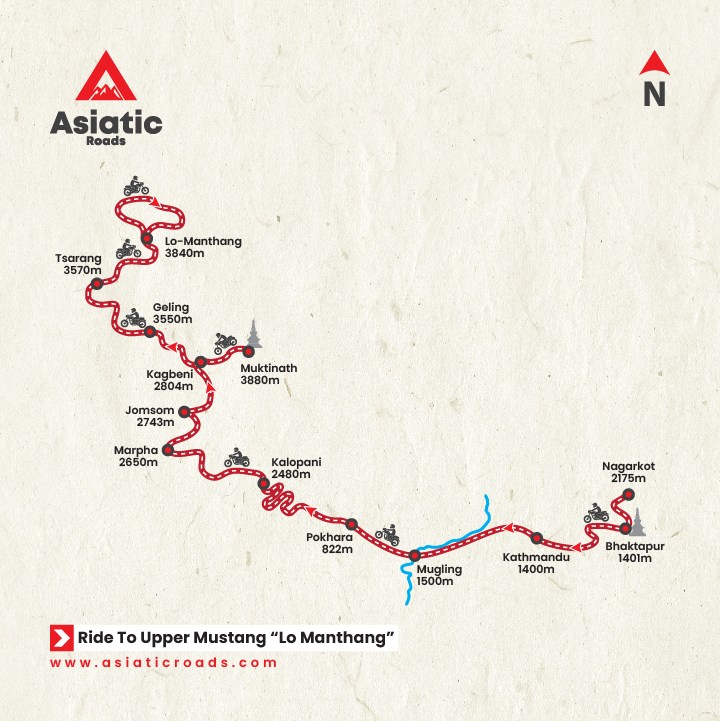
Itinerary In Detail
-
Day 01: Arrive in Kathmandu 1400m
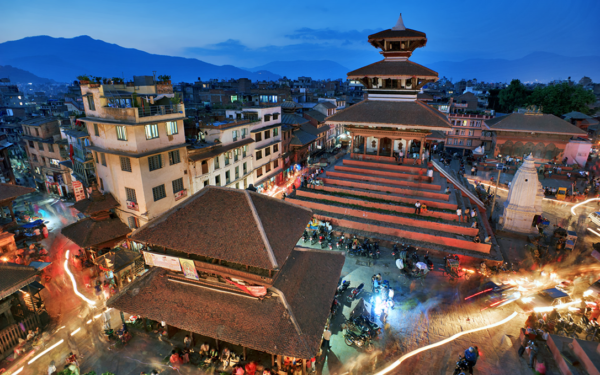
Arrival at Tribhuvan International Airport, Kathmandu. Meeting with Asiatic Roads representative. Assistance with customs procedures and baggage claim. Transfer to the hotel and check-in.
Kathmandu is the capital of Nepal, a bustling, colorful city with its own vibrant atmosphere and ancient history. Everyone who comes here is delighted of hundreds of temples, magnificent stupas, thousands of statues and filigree woodcarvings. Durbar Square with its old temples and palaces, Buddha’s eyes on the stupas of Boudnath and Swayambhu that look directly into your soul, funeral pyres of the Pashupatinath temple, vibrant streets in the Thamel district, multi-colored Buddhist flags, whirlpool of people, bicycles and cars and alluring aroma of spices – all these fascinates you at the first sight.
After welcome refreshments and lunch at the hotel a short briefing with Asiatic Roads representative. You get the general information and orientation about the ride, team and your route.
Then you have free time in Kathmandu. You can explore the city or buy the missing gears in the market.
In the evening – welcome dinner in authentic Nepali restaurant.
The main products of Nepalese cuisine are – rice, wheat, lentils, fresh vegetables and, sometimes, meat. Local chefs turn these ingenious products into pieces of culinary art, dazzling taste, teasing with smell, causing delight of any enthusiast. Food in Nepal is a meal worthy of kings. Very tasty, very spicy, very diverse – these are the three main features of Nepalese cuisine. This is beyond words. You have to try it!
Overnight at hotel in Kathmandu.
-
Day 02: Test ride to Nagarkot en-route visit Bhaktapur Durbar Square & back (2,100 m / 32 Km )/ 3 hrs.
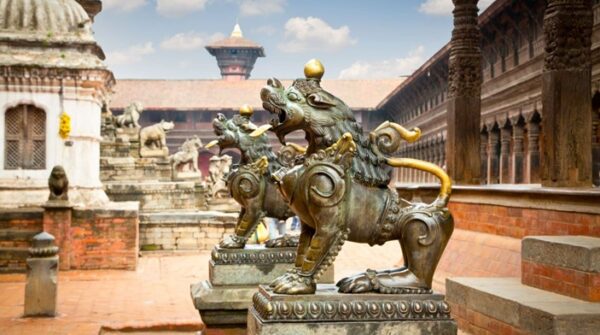
After leisurely breakfast at the hotel, you will proceed to the full day test ride to Nagarkot and sightseeing tour to ancient city of Bhaktapur. Meantime we will apply for your special restricted Area permit at Immigration Office in Kathmandu
In the morning, you meet the team and choose the motorcycles, which stay with you until the end of itinerary. Then you make a test drive and leave Kathmandu valley to try Nepali roads. It is a good training before you start the route to mountain roads of Upper Mustang. Your way lies towards marvelous Nagarkot, a hill town on the northeast ridge of Kathmandu valley
Nagarkot is considered one of the most scenic spots nearby Kathmandu known for a sunrise view of the Himalayas in clear weather from the Annapurnas all the way to Kangchenjunga on the Sikkim border. The scenic beauty of the place makes it a very popular place for tourists.
After lunch at one of the restaurants in Nagarkot you proceed to Bhaktapur, one of the royal cities in the Kathmandu valley, which is listed on a UNESCO world heritage site.
Bhaktapur, literally the “City of Devotees”, is well known for its elegant art, fabulous culture, colorful festivals, traditional dances and the typical Newari lifestyle. Here you explore the Durbar Square with Royal Palace, the Golden Gate, and the entrance to the Palace of 55 Windows, known as the most significant piece of art in Nepal. Then you visit the highest temple in the entire Kathmandu Valley- the Nyatapola Temple.
After spending some time in Bhaktapur, you will ride back to Kathmandu. The way back to the city is a good chance to feel the vibe of Nepali traffic.
Upon arrival, you have free time in Kathmandu.
Overnight at hotel in Kathmandu.
-
Day 03: Ride Kathmandu to Pokhara (827 m / 210 Km) / 6 hrs.
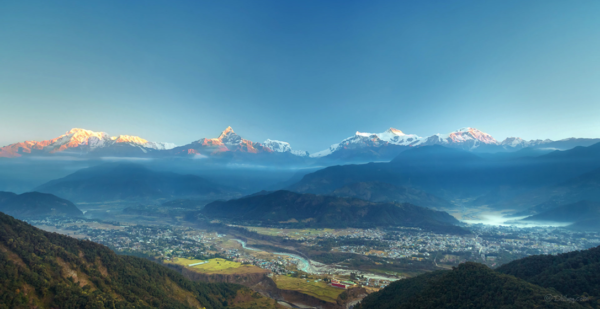
Early get up and meeting at 07.30 AM by the road captain and the team at the hotel lobby. Then you start the ride to Pokhara. We leave the traffic of the Kathmandu city, ride out of the valley and then set out for check post at Nagdhunga. From here, the road twists and turns as we negotiate the traffic and descend to Naubise and the Prithvi Highway.
The Prithvi Highway, completed in 1974 and named after King Prithvi Narayan Shah, is a 174-km-long highway connecting Kathmandu valley and Pokhara, a tourist city in the western part of Nepal. The scenery along the highway is dramatic as it follows a series of deep river valleys. Pass through typical Nepali landscape of scattered villages with ochre colored thatched houses, rice fields, winding roads and groups of small settlements. On clear days, most of the way to Pokhara there are views of Machapuchhare and the Annapurna massif.
Upon shortstop for tea at Naubise, the wide and smooth highway brings you to Kurintar, 103 km from Kathmandu. Two km further we make a stop to visit the Manakamana temple and then proceed to Mugling for lunch.
After lunch, we head west for 90 km towards Pokhara by crossing the suspension bridge and following the Marshyangdi River for a while. Our arrival in Pokhara area is greeted with fantastic views of the western Himalayas, the Annapurna range and the famous Fish Tail Mountain.
Arrival in Pokhara and check-in at the hotel.
The city of Pokhara is located in a picturesque valley at an altitude of 827 meters. This is the second largest city in the country, attracting travelers with incredible landscapes, proximity of the Himalayan peaks of the eight-thousanders – Annapurna, Dhaulagiri, Manaslu and with its tranquil atmosphere. Pokhara lies on the banks of the picturesque Phewa Lake, which is famous for the reflection of snow-capped peaks surrounding the city on its surface.
In evening, meeting at the hotel lobby for a briefing by the Road Captain. Then introduction with the rest of the backup and support team followed by a short ride to get accustomed and also conduct necessary adjustments to the levers, brakes etc. with the help of our mechanic and support team.
Overnight at hotel in Pokhara.
-
Day 04: Ride Pokhara to Kalopani (2450 m / 130 Km) / 5hrs.
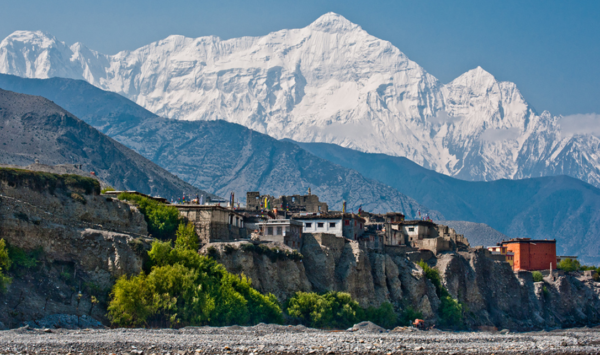
After an early breakfast at hotel, we leave Pokhara and start riding uphill towards Beni (70 Km) by the Baglung Highway. This section of the ride provides fantastic mountain vistas, picturesque terraced farmlands and an opportunity to walk on one of Nepal’s famous suspension bridges. At Mal Dhunga, we leave the main highway by taking the right trail and following Gandhaki River ride further by a dusty graveled path to Beni.
Beni is small beautiful town located on the confluence of Kali Ghandaki and Myagdi rivers. It lies on the ancient Tibet-Nepal trading route and keep its significant location as a popular place for trekkers. It is a bustling settlement lined with stores, restaurants, hotels and various government offices.
From Beni, we turn to Beni-Jomson road following the Kali Gandaki River through its Gorge that considered the deepest one in the world. A dramatic change in vegetation is witnessed here from green forests, to dry arid desert. It takes gradual acclimatizing with the surrounding.
Kali Gandaki River was named in honor of the Hindu goddess Kali, as its waters are painted black due to the disclosure of glacial silt. The water stream has formed the giant gorge for millions years, so the river is even older than surrounding Himalayan peaks. The gorge separates the peaks of Dhaulagiri (8,167 m) and Annapurna (8,091 m). If one measures its depth by the difference between the river and peaks level the gorge is the world’s deepest with a depth of approximately 6800 meters. The rough graveled dusty road poses a challenge for riders and makes it more difficult with the occasional river crossings.
Ascending gradually through the gorge, the topography changes continuously with every turn until arrival at Tatopani. Then, the trail passes Dana (1446 m) with its beautiful cascading waterfall, ascend steeply to Ghasa (2012m) and leads further towards Kalopani. En-route, there are fantastic views of the Mt. Dhaulagiri (8167 m), Tukuche (6920m), and Nilgiri (7061m). After riding about 10 km we finally come to our today’s destination Kalapani.
Overnight at teahouse lodge.
-
Day 05: Ride Kalopani to Muktinath (3710 m / 55 Km) / 4 hrs.
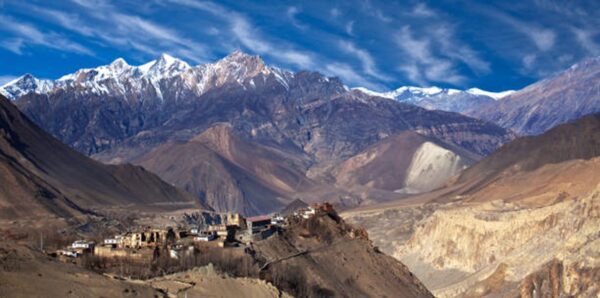
After an early breakfast, set out on the trail by following the Kali Gandaki River and passing the Thakali and Magar Villages and enjoying excellent views of Mt. Nilgiri and the Kali Gandaki River.
This day’s journey is a quite tough but the scenic views of the rugged landscape, beautiful cascading waterfalls, orange and apple orchards, scattered roadside villages, ancient Buddhist monasteries all make it ‘One Hell of a Ride”.
In the morning our way lies to Marpha, known to be the one of the oldest and most famous villages in the region and famous for its orchards and apple products. After a short break here, we continue the ride towards Jomsom (2713 m) through the dusty graveled off-road trail passing small villages and apple orchards.
Jomsom spreads over the both banks of the Kali Ghandaki. Being the district headquarter, it is primarily an administrative and commercial center of the region. The rugged peaks of the Annapurna, Nilgiri and Dhaulagiri gaze down in their awesome splendor at weathered landscapes that contrast with the deep river ravines over noisy riverbeds. Jomsom is a mixture of hard work, social frivolity tempered by culture founded on deep religious traditions. It has the only airport that operates daily scheduled flights to Pokhara.
At the end of the village, we pass three ruined chortens and continue riding the east bank of the River. After about 20 minutes, we arrive at Kagbeni, a small village where we turn to the right and continue to ascend slowly to the settlement of Jharkot and further to Muktinath.
Upon arrival in Muktinath, check in to the guesthouse, lunch and visit to Muktinath Temple
The Muktinath Temple is a sacred place for both Hindus and Buddhists. It is located at an altitude of 3,710 meters at the foot of the Thorong La Pass (5416 m). The Hindus call this sacred place MuktiKshetra, which literally means “Place of Salvation”. In Muktinath-Chumig Gyatsa all the elements are represented and that’s why yogis from both religions do their meditation here. For Tibetan Buddhists, Muktinath is a place of Dakinis and one of the 24 Tantric places. For Hindus, beside the natural fire representing Brahman and the holy waters, the central meaning of the Muktinath area is veneration of the god Vishnu in the form of ammonites called Salagrama – Shilas.
Afterwards we descend to Ranipauwa Main Bazaar of Muktinath. Rest of the day is free to relax or explore the town.
Overnight at teahouse lodge.
-
Day 06: Ride Muktinath to Gheling via Kagbeni (2800 m / 50 Km) / 4 hrs.
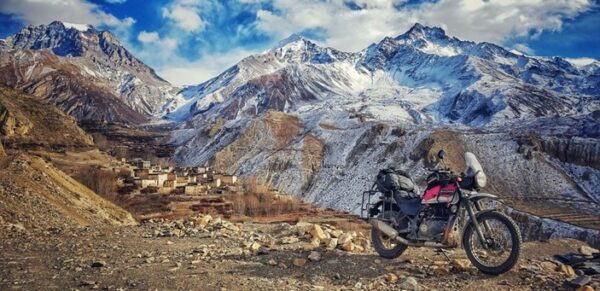
After leisurely breakfast, ride back down to Kagbeni (2800m) which is the gateway to Upper Mustang. It is better to cross The Kali Gandaki Valley in the morning as it becomes increasingly windy during the day.
After completing the permits work, we continue our ride to Geling. As we pass Kagbeni we will move following the Kali Gandaki River up to the settlement knows as Tangbe. Аfter 20 to 25 minutes ride, you reach Chele village with Steel foot bridge. Here you have two options either ride on the bridge and cross the river or ride the bike under the bridge through the running river.
The road on the east bank climbs up over many ridges. Depending upon the weather and the construction of the road to Upper Mustang, we will use a combination of high trails and the riverbank routes. From here, you can see the Gompa Kang of the Nyingmapa Buddhist sect and some caves on the west bank of the river.
In Tangbe (2930 m), we pass black, white and red chorten that is typical for Upper Mustang. The Nilgiri peak that dominates the southern skyline at Kagbeni continues to loom massively at the foot of the valley with its white washed houses, fields of barley, buckwheat, and wheat and apple orchards. In half an hour, we reach the Chhuksang village and head further to Samar, where we rest for a while and take lunch.
After lunch, the road ascend again to the ridge and goes down to a large gorge, passing by a traditional Mustang style chorten. Here you enter the next valley with juniper bushes, cross a stream and climb up to a pass to reach Syangboche village (3710 m). One more gentle climb to the pass of 3770 meters and you come to the Tama Gaon valley.
Viewpoints here open up incredible landscapes. Standing against wind waving prayer flags, you can see the grandiose Himalayan ridge and the Great Gap that Kali Gandaki River formed between Annapurna and Dhaulagiri shining with eternal ice. Far below clouds cover the plains of Nepal. If you look to the south, you will see the boundless gray-brown hills of the Tibetan Plateau cut through by deep river gorges. The wind here is severe.
The road goes down from the pass through sand slopes and narrow passages, descending to the village of Giling with houses scattered across wide barley fields. Upon arrival, check in to the lodge and rest of the evening is free to relax and explore the village.
Overnight at teahouse lodge.
-
Day 07: Ride Geling to Lo-Manthang (3700 m / 37 Km) / 3 hrs.
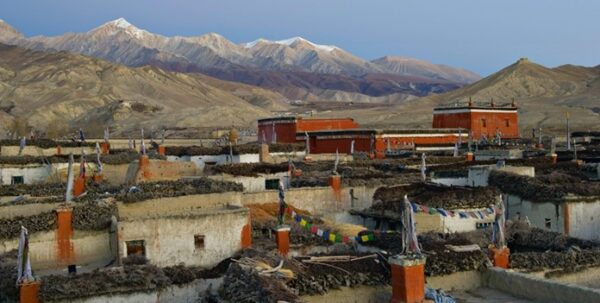
After breakfast met by the rest of the team and continue the ride to the main destination of our trip Lo-Manthang, the capital of the Lost Kingdom of Lo.
After leaving Geling we continue our ride to Ghami village. Here we meet a new challenge – 2 high mountain passes: Nyi La (3,950 m) and a nameless pass at 3,600 m. Upon descending to a new valley, you will meet ruins of former castles, houses; temples will come across to your eyes everywhere. You are finally in the heart of Upper Mustang!
From Ghami you turn right to reach Tsarang located at an altitude of 3520 m.
Tsarang is a labyrinth of fields, trees and houses, all clearly separated by stone walls. On the eastern outskirts perched a five-story White Dzong and Red Gompa. The Gompa has a large collection of statues and thankas (drawings made with a special technique) depicting a seated Buddha.
Upon arrival at Tsarang you continue the adventurous ride to Lo-Manthang via Big Chorten and Lo Dry La River.
Lo-Manthang is a medieval walled city that served as the capital of the ancient Kingdom of Mustang or “Upper Mustang”. Lo Manthang was founded in 1380 by the king Ame Pal, who oversaw construction of the city wall and many still-standing structures in the early 15th century. The monarchy officially ceased to exist on October 7, 2008 by Nepali Government order. The last king is Jigme Dorje Palbar Bista, in the direct line of the historic monarchy dating back 25 generations to 1380. The wall surrounding the city is not only a tribute to the war times, but also protects the city from the destructive winds.
In Lo-Manthang, you check in to the lodge and rest of the day is free to relax and explore the city of Lo-Manthang.
The major Temples inside the walls are Champa Lakhang (God House) that houses the massive 45 ft. statue of Buddha Maitreya, the red Thugchen Gompa with several large images of Buddha Shakyamuni, Avalokiteshvara and Maitreya, and the Chyodi Gompa of the Sakya sect, which is the site of the annual Mani Rimdu. They are all supposed to have been built in 1420. Though the people call themselves Lobas – people from Lo, they are very much Tibetan and practice a sophisticated culture and economy. The King’s palace is an imposing 4-storey building in the center of the city. It was the residence of the last king – Jigme Parbal Bista. Though his duties were largely ceremonial, he is respected by the people and consulted about many issues by villagers throughout Lo.
Overnight at teahouse lodge.
-
Day 08: Ride around Lo-Manthang
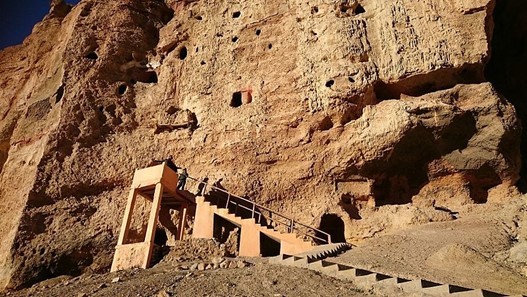
After a leisurely breakfast, we get ready for the days adventure. Today you ride from Lo-Manthang to neighboring village for the sightseeing tour.
The landscape and vista slowly changes and become more beautiful and open in the aired high altitude desert. The journey on the motorcycle back will take you through the sparsely scattered settlement, agricultural farmlands and the never-ending horizons of the rolling hills of the southern Tibetan plateau.
Today we are going to visit one of the most interesting sites of the pre-human times in this unexplored valley. The most interesting thing will be riding on a bike to beautiful Chhoser village with the famous Caves of Chhoser.
As you approach the Chhoser village, you could see numerous caves in the front of the cliff that once uses to be the home of the pre-historic Loba’s and the monks. Cross the river and drive a little further towards the equestrian stop. From here, it is time to walk towards the Cave. Make sure you carry some money with you as they charge roughly about two hundred fifty Nepalese rupees. The Cave keeper, usually a monk, will come with the keys to assist the guest who have come to visit the caves. After the caves, we then visit the monastery nearby.
Beside these interesting caves, Chhoser village is also famous for the magnificent landscape and Nymphu monastery built on the cliffs.
After the sightseeing tour, we ride back to the city of Lo, enroute visit to the Namgyal village and monastery for the sightseeing and then finally back to the lodge for hot lunch.
Rest of the day at leisure or free to explore the walled city.
Overnight at teahouse lodge.
-
Day 09: Ride Lo-Manthang to Kagbeni (2800 m / 75 Kms) / 6 hrs.
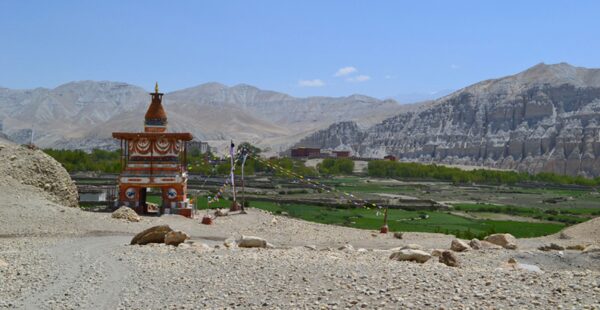
After breakfast, we have to leave the ancient walls of Lo-Manthang and marvelous landscapes of the Upper Mustang and start our back trip to Pokhara – from ancient times to civilization and modernity. Today we follow the same trail and head to Kagbeni (2840 m).
We will stop for lunch at convenient place on the way.
Upon arrival at Kagbeni we check in to the lodge and rest of the evening is free to relax and explore Kagbeni Village.
Kagbeni is a fascinating medieval village with closely packed mud brick houses, dark alleys and imposing chortens. The village stands in a little green oasis dominated by its red monastery. Though the village has a very medieval look, it can provide all the modern amenities that a traveler requires. This village also boasts of a Monastery. The monks here are of the yellow hat or the Gelukpa Sect.
Turn back to the lodge.
Overnight at teahouse lodge.
-
Day 10: Ride Kagbeni to Tatopani (1200 m / 77 Km) / 5 hrs.
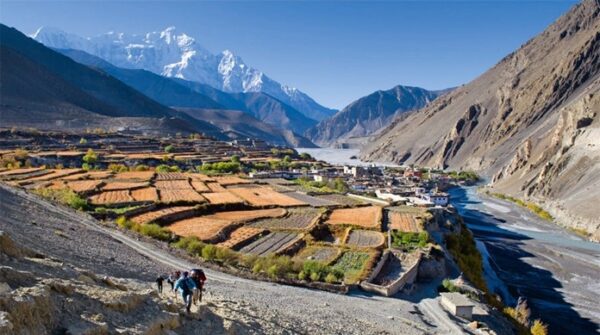
After late breakfast, you continue ride to Jomsom, which is approximately 11 km from Kagbeni. Upon arrival, we complete the paper works and later ride further 25 km, about 1 ½ hour slow ride to Tatopani via Marpha Village that we passed on our way to Mustang but had no time to stop here for a while to take a sightseeing tour of Marpha village.
Marpha is a pretty stone lined village which has survived the transition to the current time, by catering to trekkers and tourists. This large Thakali village famous for its apple orchards and apple products exhibits the typical Thak Khola architecture of flat roofs and narrow paved alleys and passageways. The Nyingma monastery dominating the village is a good viewpoint on the village and the Gandaki River valley. On the cliff above the monastery there is a chorten with painted face and a several small stone chortens on the ledges below. Legend says that the villagers became afflicted with leprosy and all attempts to control it had failed. A local monk, originally from Tukuche, south of Marpha, advised the villagers to build the chorten and hold religious rituals at the site. Since that time, the leprosy stopped and Marpha flourished once more.
After the sightseeing tour of Marpha we take lunch at nearby restaurant or lodge. Then, continue ride for another 25 km to Tatopani. Upon arrival, check in to the guesthouse.
In the evening, you can enjoy hot spring bath on a natural hot spring.
Tatopani village got its name from natural hot springs (literally ‘tatopani’ in Nepali), next to center of the village and beside Kali Gandaki river. There are two pools with warm and very warm water (around 44C) here. Therefore, it is a very popular place among trekkers following the Annapurna Circuit route.
Overnight at teahouse lodge.
-
Day 11: Ride Tatopani to Pokhara (827 m / 115 Km) / 4 hrs.
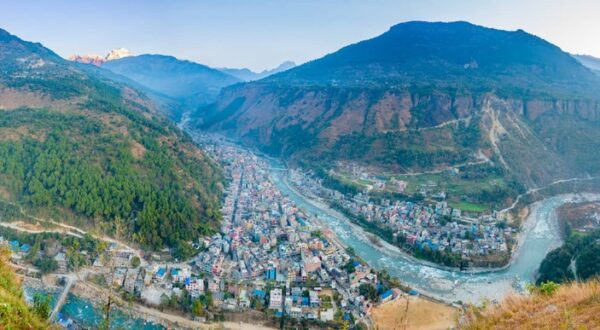
Breakfast at the guesthouse and continue the way ridding downhill to Pokhara and Phewa Lake.
It is a pleasant relief to be able to tackle the roughest section of the journey in the early morning.
Firstly, you descend back to Beni (25 km). After a quick stop for rest, set out the following trail along the river and after about an hour meet the main highway at Maldhunga and then continue of the metaled road to Pokhara, which is reached in about 2 ½ hours.
Today is the last day of your mountain adventures. No matter how bitter you are, descending along the familiar road, you leave the marvelous world of mountain peaks in order to return to the noisy life of Pokhara and then miss the harmony and sense of unity with nature that you have found in the mountains for a long time.
Upon arrival at Pokhara, check in to the hotel.
Free time for rest and relaxation. In the evening – dinner at one of the restaurant in Lakeside district.
Overnight at Lakeside hotel in Pokhara.
-
Day 12: Free day in Pokhara
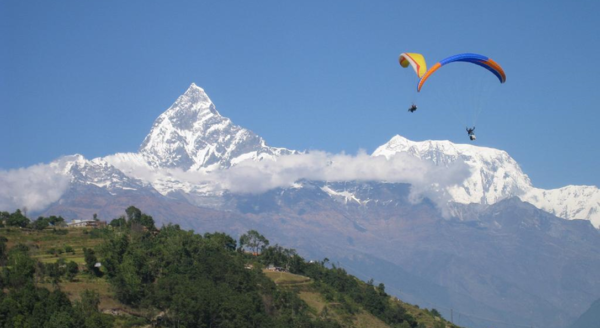
Today is a free day in Pokhara. Therefore, you are free to relax, walk around the city, do shopping or enjoy the adventure activities.
Early get up, for example, let you ride to Sarangkot and enjoy an amazing sunrise with view to magnificent peaks of Annapurna range and famous Macchapuchhre (6,993 m) or Fishtail.
Sarangkot hill is the perfect place to witness the spectacular views of the sunrise over the marvelous Himalayas, Lake Phewa, Pokhara city and the valley beyond. Here you can watch as the sun slowly exposes the beauty of the region. The view is almost indescribable.
Afterwards you turn back to your hotel to have breakfast. The rest of the day is free for you to explore the city or try doing some adventure activities.
Pokhara is Nepal’s leading adventure destination as here you can experience the excitement of various adventures: boating, hiking, pony rides, paragliding, bungee, zipline or simply relaxing at one of the several lakes in the valley. Let Pokhara be an amazing highlight of your travel experience in Nepal.
Some of interesting activities are as follows:
- Charter Helicopter flight to Mardi Himal Base Camp.
- Ultra-light flight
- Paragliding
- Zip Line
- Bungee Jump
In the evening, you have a boat trip on Phewa lake to admire the majestic panorama of mountain peaks over the city.
Overnight at Hotel in Pokhara.
-
Day 13: Ride Pokhara to Kathmandu. Farewell dinner (1370 m / 210 Km) / 6 hrs.
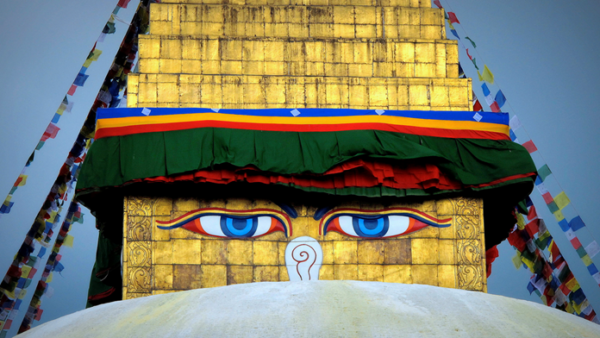
After breakfast at the hotel the road captain will meet you at the hotel lobby. Later you leave Pokhara and start the ride back to Kathmandu. The route is the same by the Prithvi Highway. We make a stop for lunch in Kurintar and you will have an extra opportunity to visit Manakamana temple.
Upon arrival in Kathmandu check-in to hotel and then all your day if free for leisure till evening.
In the afternoon, you can continue exploring sights of Kathmandu and the valley or go to Thamel Bazaar to do sopping and buy some souvenirs that will remind you about your mesmerizing tour to Nepal.
In the evening, you are invited to a farewell dinner at nice restaurant in Thamel to celebrate the end of your trip.
Overnight at hotel in Kathmandu.
-
Day 14: Final departure from Kathmandu
Breakfast at the hotel, packing and check-out.
Free time in Kathmandu.
Final departure transfer to Kathmandu’s International Airport.
13 nights 14 Days From
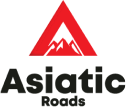
Any Question?
Feel free to call our travel experts.
+977 9851189018, +977 9801089018
info@asiaticroads.com
Whats Include and Exclude
Services Inclued
- All transfers and sightseeing tour in Kathmandu in a suitable private tourist coach.
- Services of an experienced Road Captain on a bike and back up support of a trained Mechanic, including the cost for their meals, accommodations and daily allowances.
- Two 4WD Jeeps as a backup as per Itinerary.
- Twin / double room sharing accommodation at hotel / lodges (as above)
- All meals (breakfast, lunch and dinner) from day of arrival until departure.
- Annapurna Conservation Area Project (ACAP) Fee of USD 20.00 per person. (Subject to change without prior notice)
- TIMS Card (Trekkers Information Management System Card of USD 10.00 per person. (Subject to change without prior notice)
- Special Upper Mustang permit of USD 500.00 per person (valid for 10 days). (Subject to change without prior notice)
- Comprehensive Medical Kit.
- All toll taxes for the bikes and the backup vehicle and the government taxes.
Minor Repairs like break shoe, spark plug, clutch plate, tubes, cable (01 set only) and engine oil has been included in the cost. However if more breakage happen due to rough handling/accidents/theft etc., the clients will have to bear the cost.
Services not Inclued
- Rental fees of motorcycles (Quoted separately)
- International Airfares.
- Nepal Visa fees (If applicable).
- Personal Insurance
- Personal Riding Gears
- Adventure Activities in Pokhara.
- Items of a personal nature such as bar bills telephone calls, laundry, extra mileage and any extra costs incurred due to natural calamities, flight delays etc.
- Personal medication
- Insurance for or against accidents, loss of life, theft etc.
- Personal insurance, evacuation and medical expenses.
- Costs incurred due to natural calamities, strikes, and break downs of bikes, accidents, cancellation of flights, altitude sickness or unforeseen circumstances (riots, natural calamities etc.) and situations beyond the control of Asiatic roads Pvt. Ltd.
- Personal gratitude to the support team such as Road Captain & Mechanic etc.
- Any item not mentioned in the above ‘cost includes’.
Other Costs (if Applicable)
| Particulars | Cost per person in US Dollars |
|---|---|
| 8~9 Pax | US$ 2,580.00 |
| 10~12 Pax | US$ 2,308.00 |
| 13~14 Pax | US$ 2,164.00 |
| Single Supplement | US$ 714.00 |
Cost Note
Extra’s: Rental charges of Royal Enfield Classic 500 cc / Himalayan 411cc Motorcycle is US$ 600.00 net per bikes.
Accomodations
Accomodation (Hotels envisaged or similar)
| Kathmandu | Hotel Kathmandu Marriott or similar | 3 | BB |
|---|---|---|---|
| Pokhara | Fishtail Lodge or similar | 3 | BB |
| Lo-Manthang | Royal Mustang Resort | 2 | MAP |
| Kagbeni | Redhouse Lodge | 1 | MAP |
| Other Villages | Teahouse / Trekkers lodge | 4 | MAP |
13 nights 14 Days From

Any Question?
Feel free to call our travel experts.
+977 9851189018, +977 9801089018
info@asiaticroads.com
13 nights 14 Days From

Any Question?
Feel free to call our travel experts.
+977 9851189018, +977 9801089018
info@asiaticroads.com
Reviews
In my 2 week stay, John was very professional and took me around to experience all that Kathmandu and surrounding areas has to offer. Sites were seen and many locals were met through John’s network.

Steven Stone
TravellerIn my 2 week stay, John was very professional and took me around to experience all that Kathmandu and surrounding areas has to offer. Sites were seen and many locals were met through John’s network.

Steven Stone
Traveller13 nights 14 Days From

